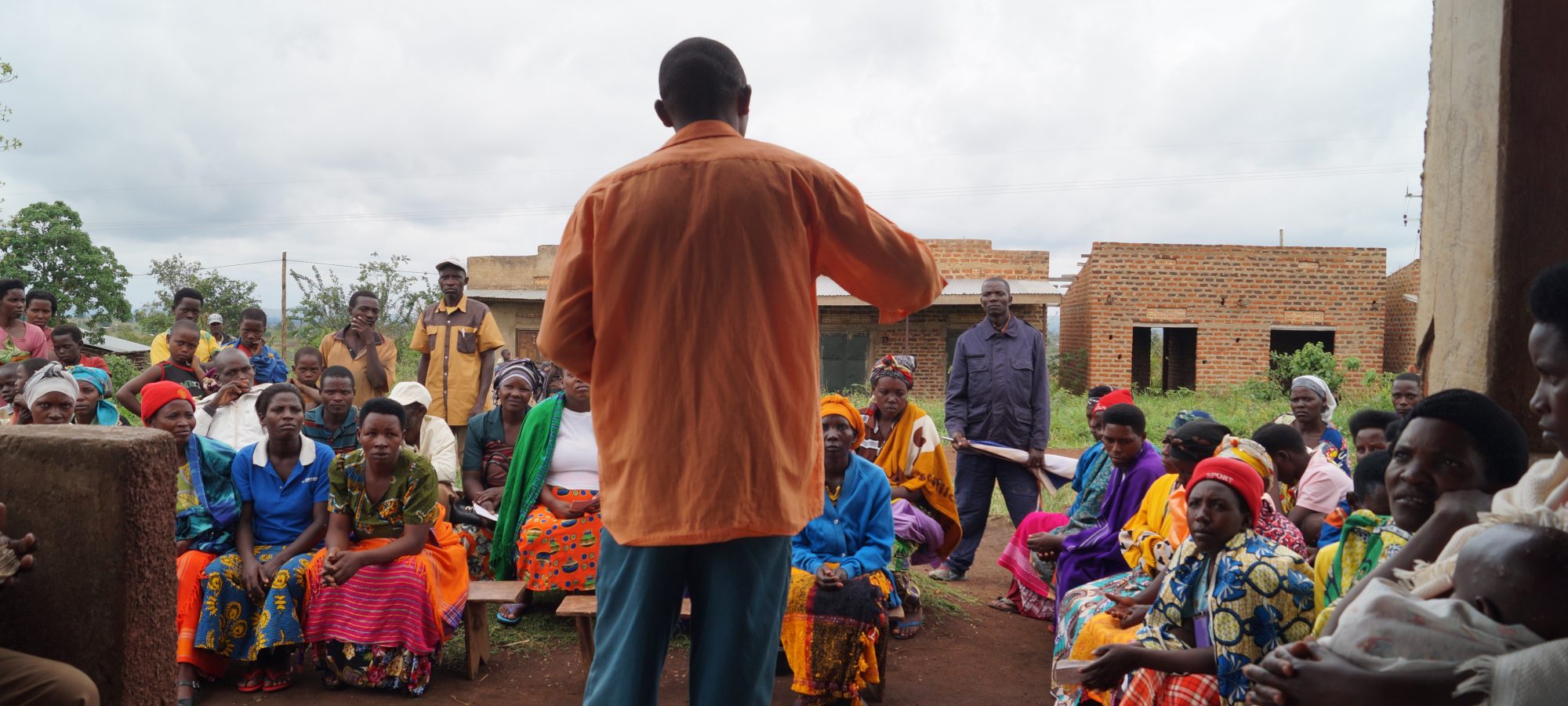In communities where diseases like malaria and pneumonia are highly prevalent, small, positive changes in behaviour can make a huge difference to their prevention and control. But how are these changes identified and how can community leaders and community health workers encourage the adoption of these behaviours?
In every community, there are individuals who find better solutions to an issue than their neighbours, and adopt ‘positive behaviours’ despite facing the same challenges, in the same context and with access to the same resources. By recognising and capturing examples of positive behaviour, solutions can be shared amongst communities for the common good. The individual who formulated a solution to a common problem becomes a role model for their neighbours. This is an approach known as ‘positive deviance’.
Positive deviance has shown to be an effective tool for community engagement in the fight against malaria and a range of other health issues including HIV and AIDS risk reduction, childhood nutrition and maternal care. Malaria Consortium has used positive deviance as an approach to engage communities in good health-seeking behaviours in a number of contexts across Africa and Asia, beginning with a pilot in 2010 through to implementation in our programmes since 2016. The approach helps to increase the impact of interventions as it is low cost and sustainable, making it ideal for use in remote communities.
Through our pilot in Myanmar, we were able to demonstrate the impact of positive deviance on a community at high risk of malaria infection, while also orienting Myanmar’s National Malaria Control Programme and other key partners on the approach. The pilot’s success provided a template for how positive deviance could be implemented in the future.
The positive deviance method
The principal steps include:
Hold a key stakeholder meeting: Orientate key community figures and authorities to gain their buy in for the approach
Community orientation: Meeting with community members to explain the concept through games and stories and begin to understand context and behaviours related to malaria prevention and control
Identification of positive deviance behaviours and role models: Carry out focus group discussions to identify role models and positive behaviours
Recruit volunteers to spread messages: Volunteers run community meetings to share positive solutions identified
Train volunteers: Before community meetings are held, volunteers attend training on malaria knowledge and strategies for communicating to their communities
Volunteers hold regular community meetings: Messages around positive behaviours by role models are disseminated around the community
Monitoring of malaria cases vs positive deviance activities: The coverage of community meetings can be compared against malaria case numbers to understand impact (allowing for confounding factors)
Handover to the community: Further orientations are held with the community to enable the sustainability of the activities
This approach has been trialled and implemented by Malaria Consortium in a number of contexts since 2010, including in border communities in Cambodia and in Ethiopia as a part of our Community-based malaria prevention and surveillance interventions project.
As a part of USAID’s Malaria Action Program for Districts (MAPD), Malaria Consortium has drawn on its experience of piloting and implementing the positive deviance approach in response to a recent increase in malaria cases in southwest Uganda in May 2020. In this instance, positive deviance was implemented within the existing community structures already in place.
In Kyotera district, ‘key influencers’ serve as role models for their communities and lead sessions to spread best practices around malaria prevention. When the uptick in cases occurred, our MAPD team worked with the District Health Team and District Health Educator to identify the health facilities reporting higher numbers of malaria cases. From here, the team could work with the key influencer in that community to identify where behaviours could be improved.
In the case of the Maganda family, four children had tested positive for malaria in the same week. The father, Mr Maganda, had developed a negative view of using mosquito nets and avoided having them in his home, believing them to be a fire risk. The key influencer worked with Mr Maganda to find a solution to his concerns and change his view.
At a follow up visit, Mr Maganda was keen to pass his knowledge on to others in his community, “I know some stubborn members in my community who also do not use nets. I am going to visit them and tell them my story and encourage them to buy nets so that they can save the money we used to spend on treating malaria in our children and can use the money to develop our community”.
Positive role models in any given community are a powerful tool for improving health-seeking behaviours. Our work shows that positive deviance can be successfully implemented in remote communities with limited resources, with or without existing community engagement structures. The addition of follow up visits and community handovers built in to the approach mean that the activities can be sustained by the communities without external support.
Ashley Giles is Senior Communications Officer at Malaria Consortium
Banner photo: A key influencer passes health messages on to his community.
Credit: Malaria Consortium
